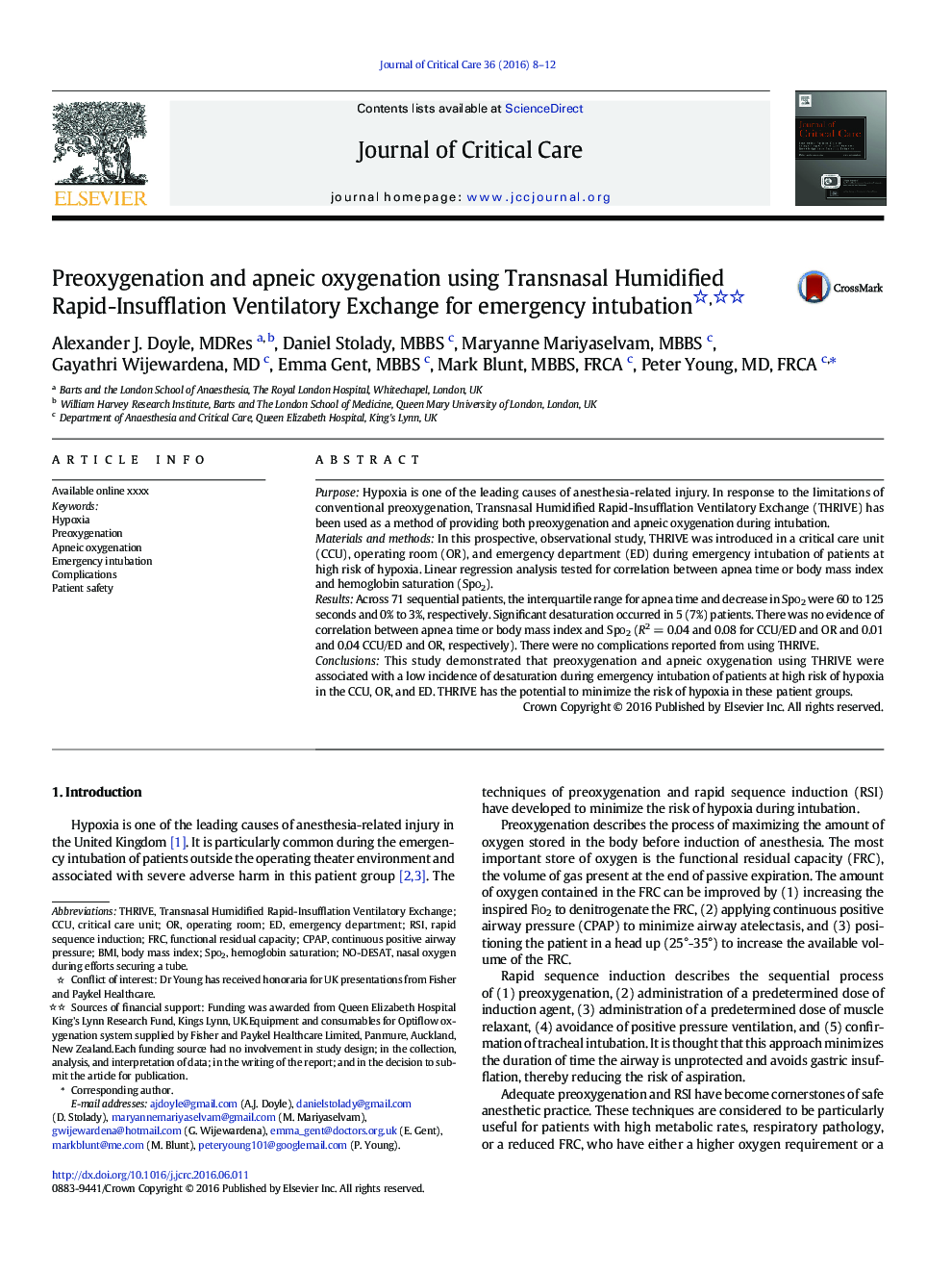| کد مقاله | کد نشریه | سال انتشار | مقاله انگلیسی | نسخه تمام متن |
|---|---|---|---|---|
| 2764372 | 1567676 | 2016 | 5 صفحه PDF | دانلود رایگان |
PurposeHypoxia is one of the leading causes of anesthesia-related injury. In response to the limitations of conventional preoxygenation, Transnasal Humidified Rapid-Insufflation Ventilatory Exchange (THRIVE) has been used as a method of providing both preoxygenation and apneic oxygenation during intubation.Materials and methodsIn this prospective, observational study, THRIVE was introduced in a critical care unit (CCU), operating room (OR), and emergency department (ED) during emergency intubation of patients at high risk of hypoxia. Linear regression analysis tested for correlation between apnea time or body mass index and hemoglobin saturation (Spo2).ResultsAcross 71 sequential patients, the interquartile range for apnea time and decrease in Spo2 were 60 to 125 seconds and 0% to 3%, respectively. Significant desaturation occurred in 5 (7%) patients. There was no evidence of correlation between apnea time or body mass index and Spo2 (R2 = 0.04 and 0.08 for CCU/ED and OR and 0.01 and 0.04 CCU/ED and OR, respectively). There were no complications reported from using THRIVE.ConclusionsThis study demonstrated that preoxygenation and apneic oxygenation using THRIVE were associated with a low incidence of desaturation during emergency intubation of patients at high risk of hypoxia in the CCU, OR, and ED. THRIVE has the potential to minimize the risk of hypoxia in these patient groups.
Journal: Journal of Critical Care - Volume 36, December 2016, Pages 8–12
